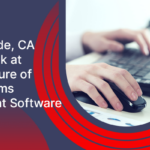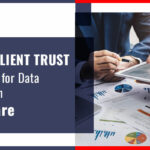Riverside, CA: A Look at the Future of Claims Management Software in 2024
July 25, 2024
The insurance business is going through a big change because technology is changing so quickly. The most important part of this change is how well claims-processing tools and cutting-edge data analytics work together. The blog post talks about how these two technologies work together very well and how they are changing the way insurance fraud is found. It gives us a look into a future with better security and speed.
Claims handling software has grown from a simple tool for managing paperwork to a complex platform that can automate chores and make work run more smoothly. Modern software has become an important part of the fight against insurance scams because it can digitize documents and handle them in real-time.
When claims-processing software and data analytics are combined, it changes the way the business deals with fraud in a big way. With its powerful ability to find trends and outliers in very large datasets, data analytics takes a proactive approach to finding fraud. With this strong mix, insurers can not only spot scams right away, but they can also see threats coming and stop them before they happen.
How the Problem of Insurance Fraud is Getting Worse
Fraud in the insurance business is very common and costs billions of dollars every year. Fraudsters’ methods are always changing, from making up claims to working with organized crime groups. There has never been a more important time for a strategic and improved method of finding scams.
How Claims Processing Software Has Changed Over Time
To understand what will happen in the future, it’s important to look at how claims-handling software has changed over time. Find out about the main features that make modern claims processing software so important in the fight against fraud. It all started as a tool to make administrative chores easier and has grown into a complex platform. We’ll talk about robotics, digitizing documents, and working in real-time.
Data Analytics Can Help Bring About Change
Data analytics has become the engine that will move claims-handling software into the future. Talk about how important it is for data analytics to find patterns, outliers, and trends in very large datasets. Learn about the different analytics methods, like predictive modeling and machine learning, that allow businesses to spot scams in real-time and even see threats coming before they happen.
Fraud Detection In Real Time
The ability to spot scams in real time is one of the most important benefits of combining data analytics with claims-handling software. Find out how these systems can quickly flag claims that don’t seem right, so insurers can act right away. Talk about how important real-time monitoring is for stopping fake payouts and keeping insurance operations honest.
Using Predictive Analytics To See How Fraud Will Change Over Time
Looking ahead, predictive analytics is a key part of spotting and preventing new scam trends. Talk about how machine learning systems can look at past data to find trends and guess what kind of fraud might be happening. By always being one step ahead, insurers can change their plans to deal with new fraud schemes before they happen.
Insights and Decisions Driven by AI Artificial intelligence (AI) is about to change the way insurers make choices. Look into how ideas driven by AI that come from claims handling tools and data analytics can help you make better decisions. From evaluating claims to evaluating risk, AI gives a fuller and more accurate picture, which makes it less likely that someone will fall for complex scam schemes.
Blockchain As A Foundation You Can Trust
The environment for handling claims is safer and more open thanks to blockchain technology. Find out how blockchain can be added to claims-handling software to make a record of events that can’t be changed and can be checked. Better data protection and more trust among partners are two benefits of this. This makes scams less likely to happen.
User-Friendly Interfaces To Make Things Run More Smoothly
The future of claims-handling software isn’t just about new tools; it’s also about making platforms that are easy for people to use. Find out how easy-to-use tools can help boost productivity by making it easier for claims handlers and inspectors to move around in huge datasets. The partnership between people and machines becomes smooth, which makes scam detection more effective overall.
Following The Rules And Meeting Industry Standards
As the insurance business changes, so do the rules and regulations that govern it. Talk about how important it is to make sure that the software used for handling claims is in line with these rules. Find out how following the rules not only keeps insurance safe from legal trouble but also builds trust and honesty in the business.
Final Words
Insurance scam discovery is about to take a huge and exciting step forward thanks to the smooth merging of cutting-edge claims handling software and advanced data analytics. As technology keeps getting better at a speed that has never been seen before, insurers are at the head of a unique chance that help them beat scammers, protect their finances, and build a safer future for the whole insurance environment. When claims handling tools and data analytics work together, it signals a big change in how the industry fights fraud. Because of this active relationship, insurers can use real-time data, AI, and machine learning systems to their full potential, building a strong defense against fraud. By looking at very large datasets very quickly and accurately, insurers can not only find trends that seem fishy, but they can also predict and stop bogus claims before they happen. Using these new technologies could lead to a future where insurance fraud is not only found but also stopped before it happens. This proactive method not only protects the bottom lines of insurers but also makes the insurance environment more trustworthy and effective as a whole. There is more trust in the insurance business now that insurers can boldly promise their clients a safe and clear experience.
7 Features Every Online Claim Management System Needs
June 27, 2024What to Look for in Claims Management Software?
May 8, 2024









